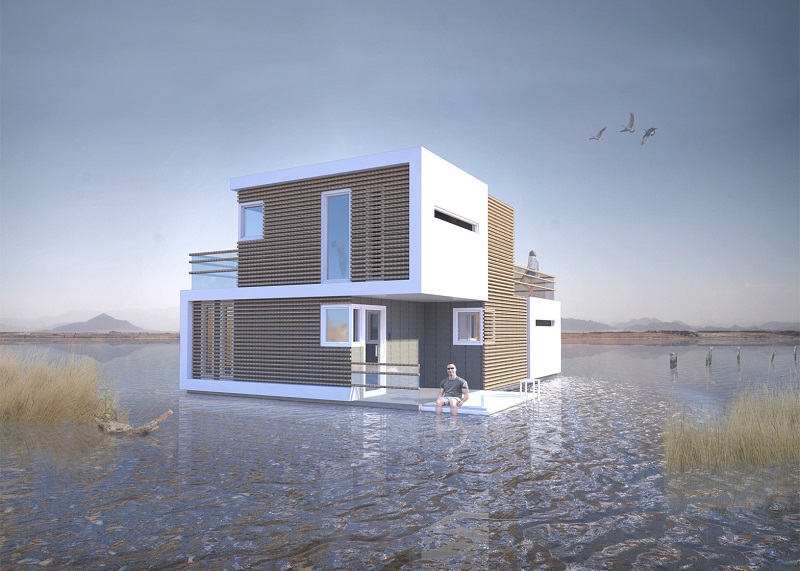Prenuptial Housing
In July 2016, the Amsterdam-based design and engineering practice Studio OBA revealed their design concept Prenuptial Housing. The creater Omar Kbiri suggested that 'Prenuptial Housing is a solution for the increasing number of marriages that end up in divorce'.
The design consists of two independent prefabricated units that form the foundation of a single floating house; the studio looking towards Amsterdam's canal network and strong design tradition for floating architecture as inspiration.
The two units are to be connected Tetris-like with a simple fastening mechanism. The idea is that if the couple splits up, they can detach the two units to float apart as separate housing again.
The building consists of lightweight carbon fibre elements and a semi-transparent wooden layer that enhances unity and creates the possibility of adapting to different environments, as well as enabling it to float.
Omar Kbiri said: "With the increasing number of divorces each year, our concept is – regrettably – becoming more and more relevant. I especially like the fact that we can stabilise the home front during an otherwise very hectic time. With this concept you namely don't need to relocate after a break-up."
Studio OBA imagine the house could be particularly popular among couples in Belgium, Portugal and Hungary, where divorce rates are among the highest in the world. They are also planning a prototype and are in discussion with investors, with a tentative plan to start taking orders in early 2017.
Content and images courtesy of Studio OBA.
[edit] Related articles on Designing Buildings
Featured articles and news
RTPI leader to become new CIOB Chief Executive Officer
Dr Victoria Hills MRTPI, FICE to take over after Caroline Gumble’s departure.
Social and affordable housing, a long term plan for delivery
The “Delivering a Decade of Renewal for Social and Affordable Housing” strategy sets out future path.
A change to adoptive architecture
Effects of global weather warming on architectural detailing, material choice and human interaction.
The proposed publicly owned and backed subsidiary of Homes England, to facilitate new homes.
How big is the problem and what can we do to mitigate the effects?
Overheating guidance and tools for building designers
A number of cool guides to help with the heat.
The UK's Modern Industrial Strategy: A 10 year plan
Previous consultation criticism, current key elements and general support with some persisting reservations.
Building Safety Regulator reforms
New roles, new staff and a new fast track service pave the way for a single construction regulator.
Architectural Technologist CPDs and Communications
CIAT CPD… and how you can do it!
Cooling centres and cool spaces
Managing extreme heat in cities by directing the public to places for heat stress relief and water sources.
Winter gardens: A brief history and warm variations
Extending the season with glass in different forms and terms.
Restoring Great Yarmouth's Winter Gardens
Transforming one of the least sustainable constructions imaginable.
Construction Skills Mission Board launch sector drive
Newly formed government and industry collaboration set strategy for recruiting an additional 100,000 construction workers a year.
New Architects Code comes into effect in September 2025
ARB Architects Code of Conduct and Practice available with ongoing consultation regarding guidance.
Welsh Skills Body (Medr) launches ambitious plan
The new skills body brings together funding and regulation of tertiary education and research for the devolved nation.
Paul Gandy FCIOB announced as next CIOB President
Former Tilbury Douglas CEO takes helm.
UK Infrastructure: A 10 Year Strategy. In brief with reactions
With the National Infrastructure and Service Transformation Authority (NISTA).
























